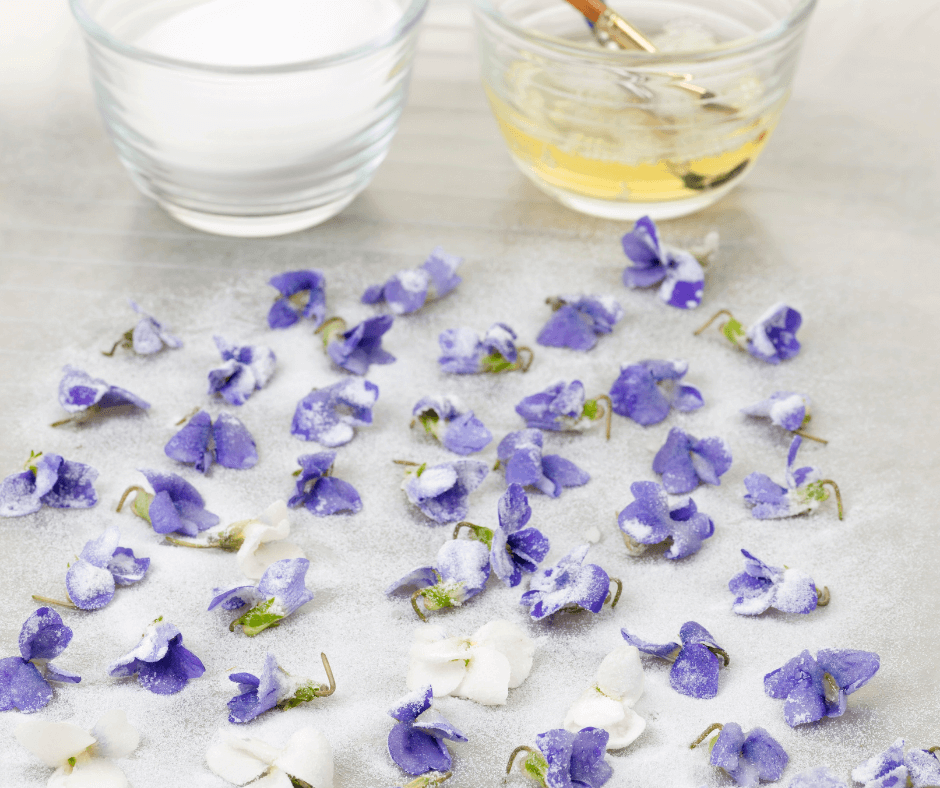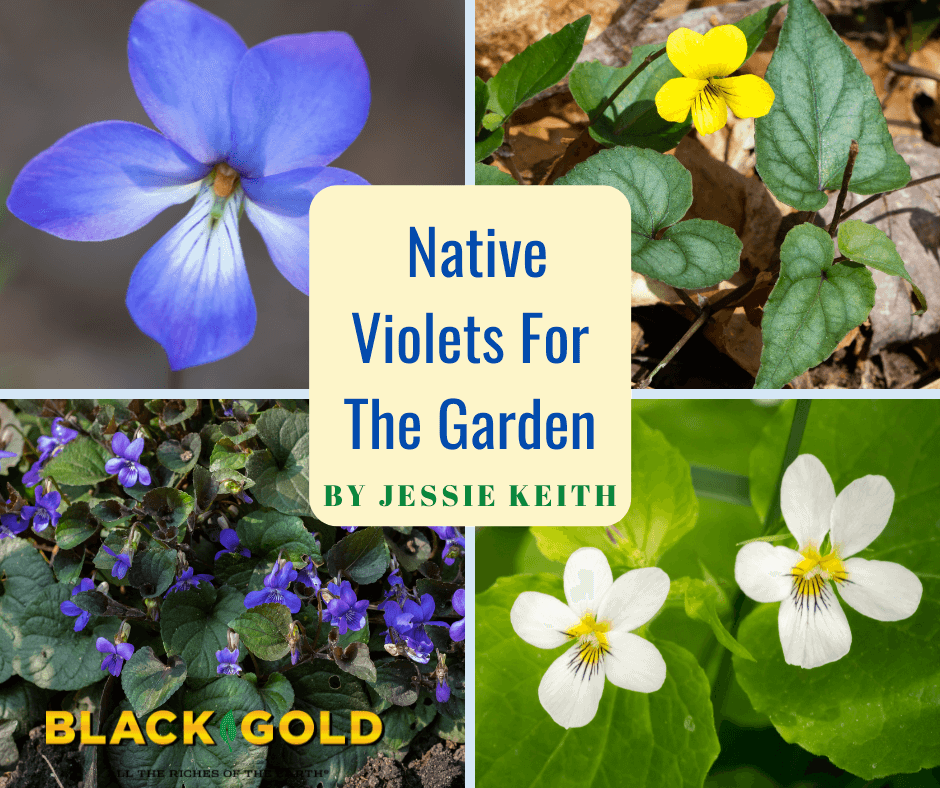
Last spring I visited the Smokey Mountain National Park during high wildflower season, and I was struck by all of the unusual, beautiful native violets there. All had a delicate beauty suited to woodland and shade gardens. I started looking for garden center availability and was struck by the many North American violets available to native gardeners. Most are perennial, but a few survive as spring annuals.
Violets and Wildlife
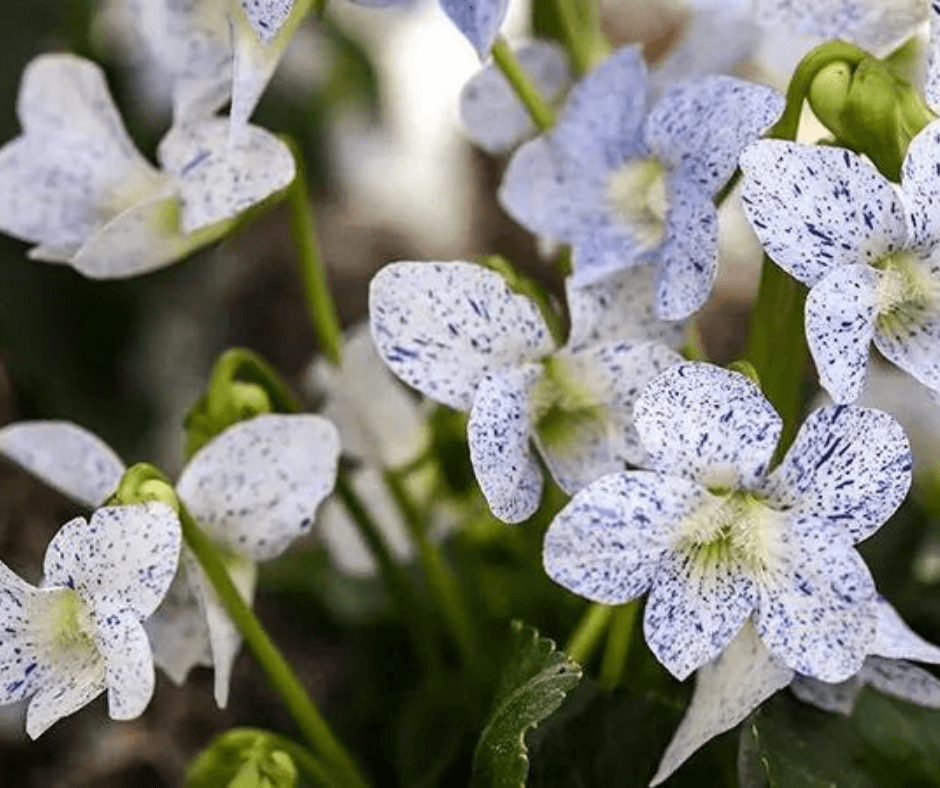
Overall, our native violets are easy, pretty, and have a place in the garden. In fact, they support wildlife more than most might think. Even the native common blue violet (Viola sororia, Zones 3-9), which gardeners often weed from their beds and lawns, are beautiful and feed the larvae of many species of fritillary butterflies, which are close relatives of monarchs. According to the Xerces Society, a whopping 14 species of greater fritillaries (Speyeria spp.) and 16 species of lesser fritillaries (Bolloria spp.) lay eggs on common violet leaves for their caterpillars to feed upon, develop, and grow. The fragrant flowers, which have bee nectar guides and are largely pollinated by native bees, are also visited by butterflies. Some native bees are even specialized for Viola flower pollination, such as the violet miner bee (Andrena violae).
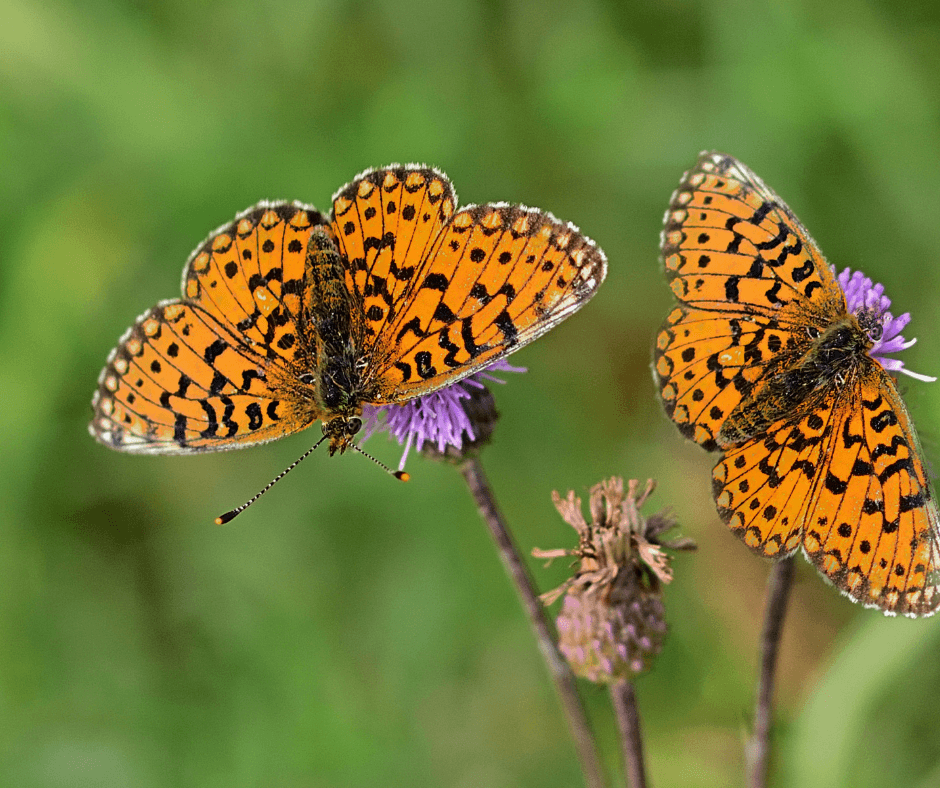
For these reasons, they are worth leaving alone in lawn areas or other places in the yard. Let them sow and spread freely where they do not compete with other garden plants. If you don’t have common violets in your yard, a good garden variety to try is the beautifully speckled ‘Freckles‘. My mother started it from seed over 25 years ago, and they are still beautiful in the garden! The flowers look very pretty clustered in small bud vases.
Six Beautiful Native Violets for the Garden
Most native violets grow best in fertile, moist soil and partial sun to shade. They also tend to spread, some slowly and others more quickly. They make fine garden perennials, especially for more naturalistic beds. Any exceptions to these rules are noted.
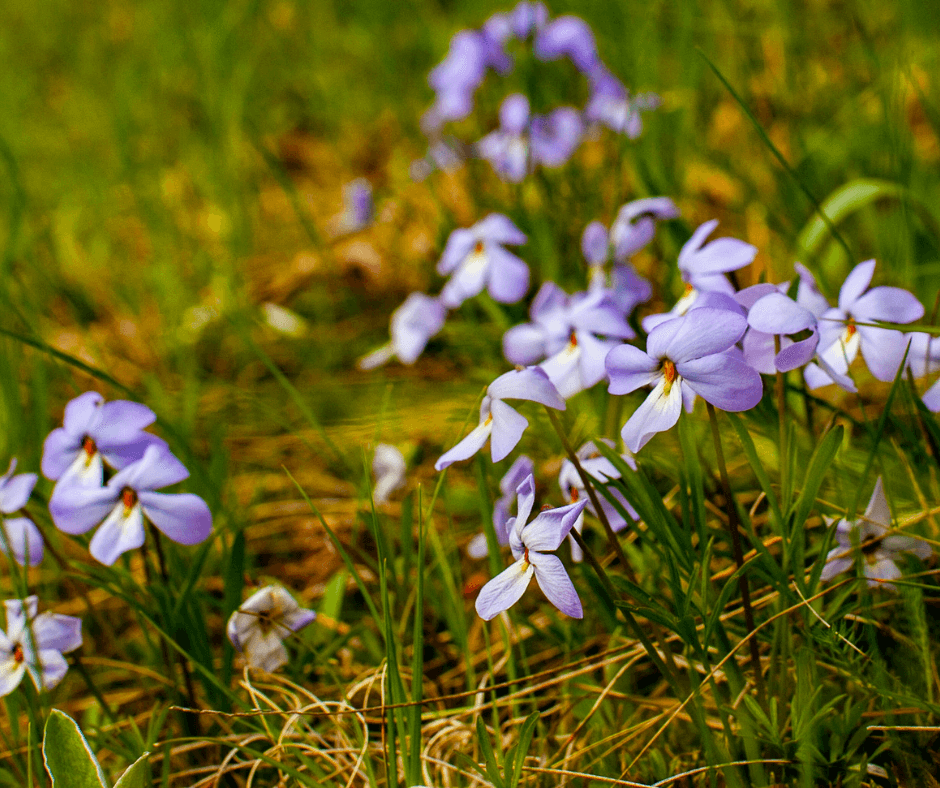
When researching these native violets, I quickly found that all native American violets feed numerous native bees and play larval host to many fritillary species–too many to be mentioned by name. Lots of American fritillaries are threatened or endangered, so maintaining a few native violets in your yard is important! It is also important to source nursery-grown stock or seeds rather than plants collected from the wild. (Click here to learn more about avoiding poached, rare plants.) All seed and plant sources provided here are legitimate.
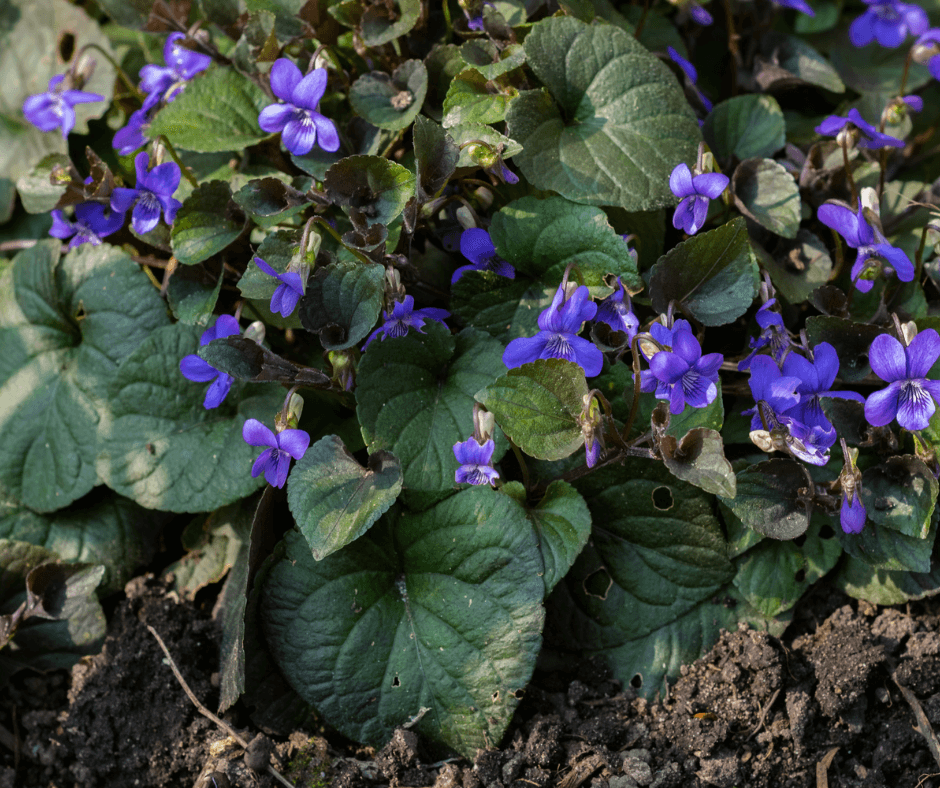
Canadian violet (Viola canadensis, Zones 2-8): These hardy perennial violets can reach up to 12 inches and produce lots of white or pale-violet spring flowers that stand tall above the large, heart-shaped leaves. It makes a pleasing native groundcover for moist woodland or shade gardens and is native across much of central and northern North America, extending far into Canada. Expect Canadian violet to self-sow and spread naturally to create a seasonal native groundcover for the shade.
Halberd-leaf yellow violet (Viola hastata, Zones 5-8): Though rarely sold in commerce, at all but the most select native plants sales hosted by native plant societies, Halberd-leaf yellow violet is one of the prettiest of all native woodland violets. Its attractive leaves have silvery markings and sunny yellow flowers are produced in the spring. The woodland native is found in old woods across the eastern coastal United States. If you can find it, grow the 4-8-inch plants in a moist, shaded garden spot.
American dog violet (Viola labradorica, Zones 2-8): Just look at that hardiness zone! This little 3-6-inch violet has native populations that extend into the farthest north reaches of eastern Canada, and it is so lovely. Its low-growing bunches have purplish-bronze, heart-shaped leaves as well as royal-violet-purple flowers in the spring and summer. It is evergreen to semi-evergreen, making it an excellent small-scale groundcover violet for the full sun to partial shade.
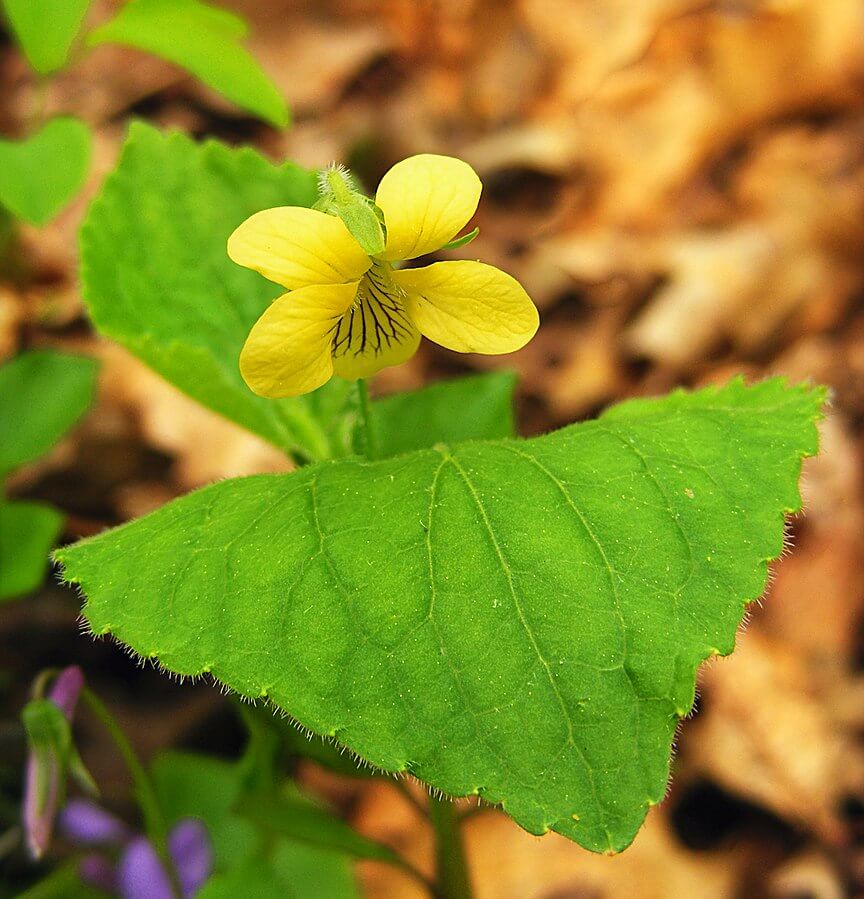
Bird’s foot violet (Viola pedata, Zones 4-8): I love this unique violet for its fine foliage, which resembles little green bird’s feet, and wide, violet-blue flowers punctuated by orange eyes. They are found in old, established sandy woodlands across eastern North America. Expect the 1.5-inch flowers to appear from spring to midsummer. They will tolerate full to partial sun. Well-drained soil and regular moisture are required. The 3-10-inch plants do not tend to spread.
Prairie violet (Viola pedatifida, Zones 3-7): The sun-loving little prairie violet is native across the prairie lands of Central North America and spreads less aggressively than average violets. Its bright violet-purple flowers look pretty against the delicate, cut-leaf foliage. Unlike most violets, prairie violet will tolerate drier soils. Flowering occurs from mid-spring to early summer. Sometimes it will rebloom later in the season. Plant the 6-inch violets along garden edges where they can slowly self-sow.
Smooth yellow violet (Viola pubescens var. eriocarpa, Zones 3-7): Here is a pretty yellow-flowered violet that grows best in shaded, moist, eastern North American woodlands and gently spreads. Expect it to produce little yellow blooms from mid-spring to summer. Standard Viola pubescens has downy rather than smooth leaves.
Starting Native Violets From Seed
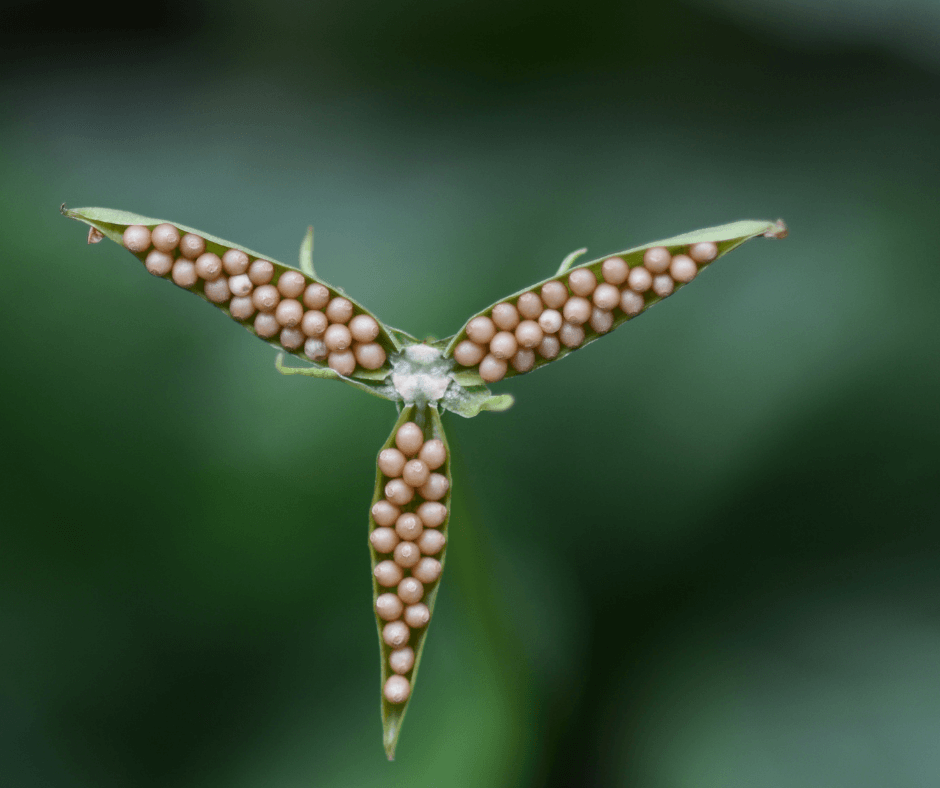
These perennial violets are most often sold from seed, so they are not expensive to grow. Most take a year before flowering from seed. We recommend sowing the seeds in flats of quality potting mix, such as Black Gold Natural & Organic Potting Mix, outdoors in the fall. This method, called moist outdoor seed stratification (click here for stratification guidelines), lets them experience the winter moisture and cold, which many violet seeds need to germinate. When grown by this method, they often sprout in the late winter or spring.
Other Violet Uses
Violets serve other useful purposes in the garden. The flowers are edible, and their fragrant blooms have been used to make perfume over the ages. One common old-fashioned use for the flowers was to candy them. The sugar-crusted violets hold their color, are tasty, and look beautiful for decorating cakes and cookies. (Click here for a good candied-violet recipe.) The flowers can also be used to make a delectable, violet-blue simple syrup that can be added to mixed drinks and lemonade. (Click here for a good violet simple syrup recipe.)
